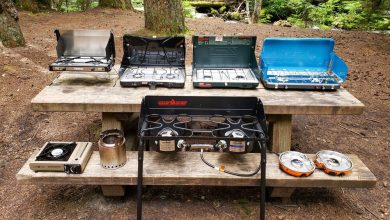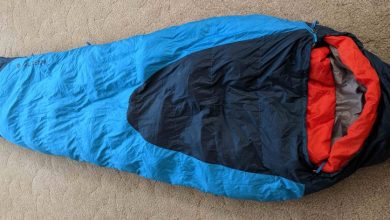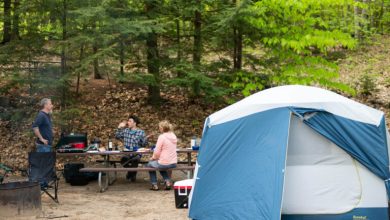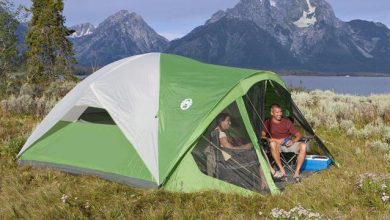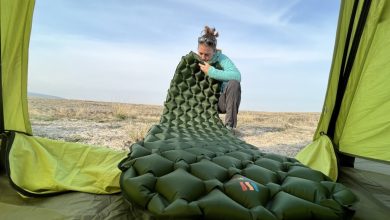Backpacking for Beginners – The Ultimate Guide
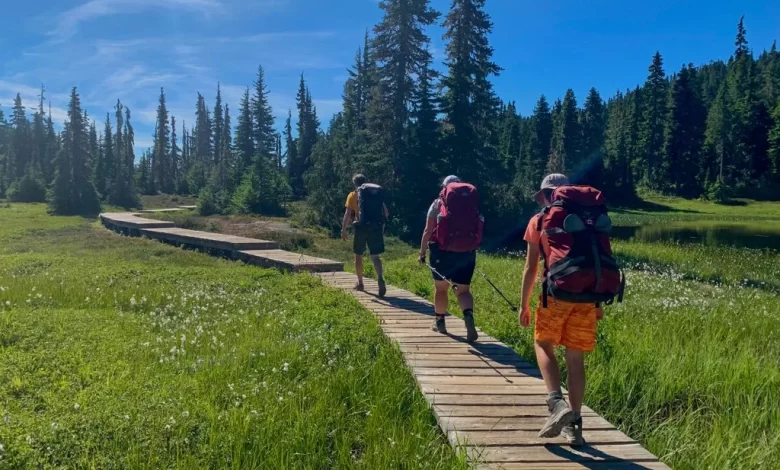
Backpacking is an experience that combines hiking with backcountry camping. It permits you to expand your horizons past the car campground to enjoy a more productive, more immersive outside experience. But if you are new at backpacking, you should read and learn some backpacking for beginners tips.
A vital distinction in day hiking is that the magnitude of your pack–your backpack (and you) need to fulfil all of life’s essentials on your back. And you also need to pick those essentials.
Ready for the First Backpacking For Beginners Trip?
Follow these Steps
Opt for a simple destination – Short overnight climbs near home are most significant.
Get necessary gear and clothes – Borrow and scrounge equipment to spend less.
Plan your meals – Just-add-water meals and locate straightforward to cook choices at regular grocery stores. Also, pack lots of snacks to get gas.
Prepare for the trip – Dress to perform the planned increase with a fully loaded pack; buy your licenses; brush up on Leave No Trace principles.
When you’ve got a seasoned backpacking buddy who knows you well, encourage them together, and they could become your guide. However, you could also do this backpacking item in your –that is the focus of the report. We suggest that you bring a buddy irrespective of their backpacking understanding. However, since making any trip safer and more enjoyable.
Backpacking for Beginners Tips
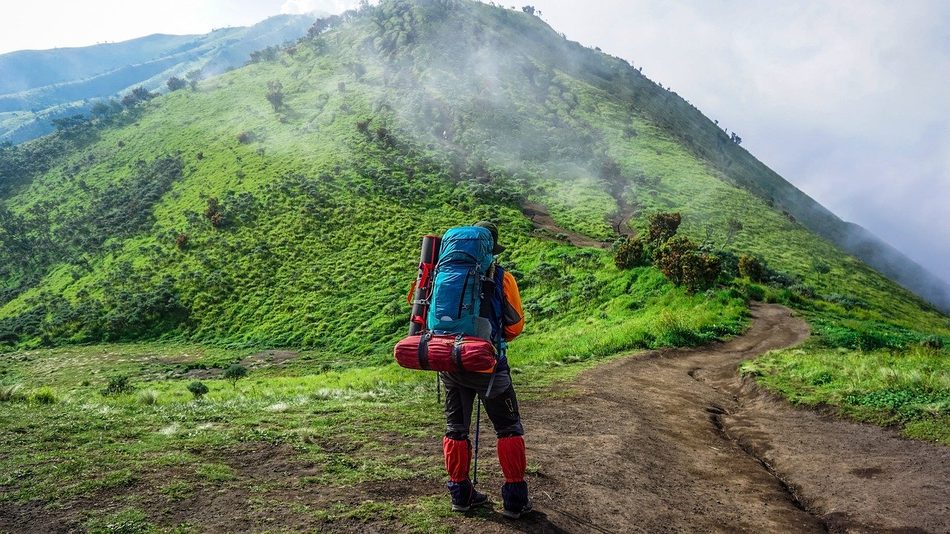
Now I will show you a few easy tips about beginning backpacking. Read carefully for better understanding.
Pick an Easy Backpacking Destination – The vital advice here would be to err on the side of simple. If the increase is too tricky, it may make for a miserable experience. When it’s too simple, then you merely have more time to explore the region around your camp.
Consult with seasoned backpackers – Hiking club associates and Easy trip guide writers love to generate trip recommendations. Hiking guidebooks are a valuable instrument –you will discover the ideal choice for any particular place. Online sites such as the co-op’s Hiking Project are yet another excellent resource.
Select a location near home – You would like to spend more time hiking compared to just driving. It is also safe to have sufficient daylight hours to reach camp before night.
Only a couple miles roundtrip is good – Strategy on shorter distances than the usual day increase since walking using a more substantial pack is much slower and harder.
Aim to get a couple of hundred feet of altitude gain – If you have improved considerably, then you know that mileage alone does not tell the complete story. So also select a path with less elevation gain compared to your average day increase.
Select a well-travelled course and well-established Circle – It is lovely to have hikers and backcountry campers nearby that will provide you with a hand in case you encounter difficulties.
Make sure there is close water camp – In case your origin is going to be a lake or large river, then you should be OK. Streams and springs may dry up, however, so double-check local property managers before relying upon a little water resource.
Contemplate going without Junior in your first trip – Although they could both be a great pleasure, their existence will complicate matters somewhat. If and whenever you opt to have them connect you, then have a look at our articles on Backpacking with Dogs and Backpacking with Children.
Hunt summertime –Unless your destination is just one where intense heat or fire threat may be a problem, go in mid-summer to make the most of daylight hours and your chances of comfortable issues. Always check weather predictions and do not be afraid to cancel or return in case a storm moves.
Contemplate “walk-in” Campground:
Many national and state parks have campgrounds which are within a mile or so of a car campground. Remaining in one of these is a superb way to transition to backpacking.
Acquire Necessary Backpacking Tools and Cloths
Maintain your initial investment reduced by borrowing or leasing the most expensive things –your tent, sleeping bag and mat. Since they need to fit you nicely, boots, and also to some lesser scope packs, have to be your gear.
Gears You Need
Since you need to carry and fit all of it into the pack, backpacking gear needs to be compact and lightweight. That is why, with a few exceptions, it is not sensible just to repurpose automobile camping gear. Bear in mind, also, that you are going to be dividing speed like baskets and tents and stoves once you lift with a buddy.
Tent
Bring a tent ranked for three seasons (spring, summer, and autumn) instead of a four-season tent since you are not prepared for mountaineering only yet.
Backpack
In case you borrow a pack, try it out first to be sure, it fits nicely. Load this up with various items to approximately 30 lbs. And take it outside on a very long test hike. When it’s comfortable on the buttocks and at the shoulders, then it is probably excellent for this particular first backpacking trip.
In case you choose to purchase a pack, have a look at the backpack expert measure your chest so that they can correctly fit you. Do not be tempted by an ultra-light version on your first backpack since it’s going not to be as cushioned and have a less inviting arrangement compared to a more deluxe version.
Sleeping bag
If you choose to purchase a bag, think about the advantages and disadvantages of the download vs artificial fill, particularly concerning the weather conditions you are likely to strike. For the first bag, synthetic is a fantastic alternative since it is versatile and usually less expensive than down.
Sleep pad
Cushioning is essential to a fantastic night’s sleep. Insulation is, also, which explains the reason why you cannot have a pool float and even aspire to sleep hot. If you purchase a pad, then think about the merits of every kind: closed-cell foam pads, insulated air ducts, and self-inflating pads. If you’re able to sleep well on a super-firm surface, then a closed-cell mat may save yourself a good deal of money and weight. To get a fantastic compromise between value and comfort, pick a self-inflating pad.
Stove
If you possess a single-burner camp cooker which weighs under a pound, it is probably fine for the first backpacking trip. If you decide to purchase, you are going to need to think about fuel types first, then make your cooker selection. A good deal of novices goes using a gas-canister stove since they are affordable and straightforward to use. And make sure to pack together a complete canister or jar of the ideal kind of fuel for your furnace.
Water treatment
Much pristine-looking sources can conceal things you would instead not drink, so it is sensible to deal with all water from the wilds. You can borrow a filter; however, an ultra-light and comfortable alternative for your first trip is compound therapy: pills or drops you add to a jar to purify your water.
Kitchen Items
Save cash by scrounging from camping gear or well-worn things out of the regional thrift store or house kitchen (not the beautiful china). Bring only enough pots, pans, plates, utensils and cups, so you can cook and consume every one of your meals that are planned. A tiny towel also is useful.
Clothes to Carry for Backpacking
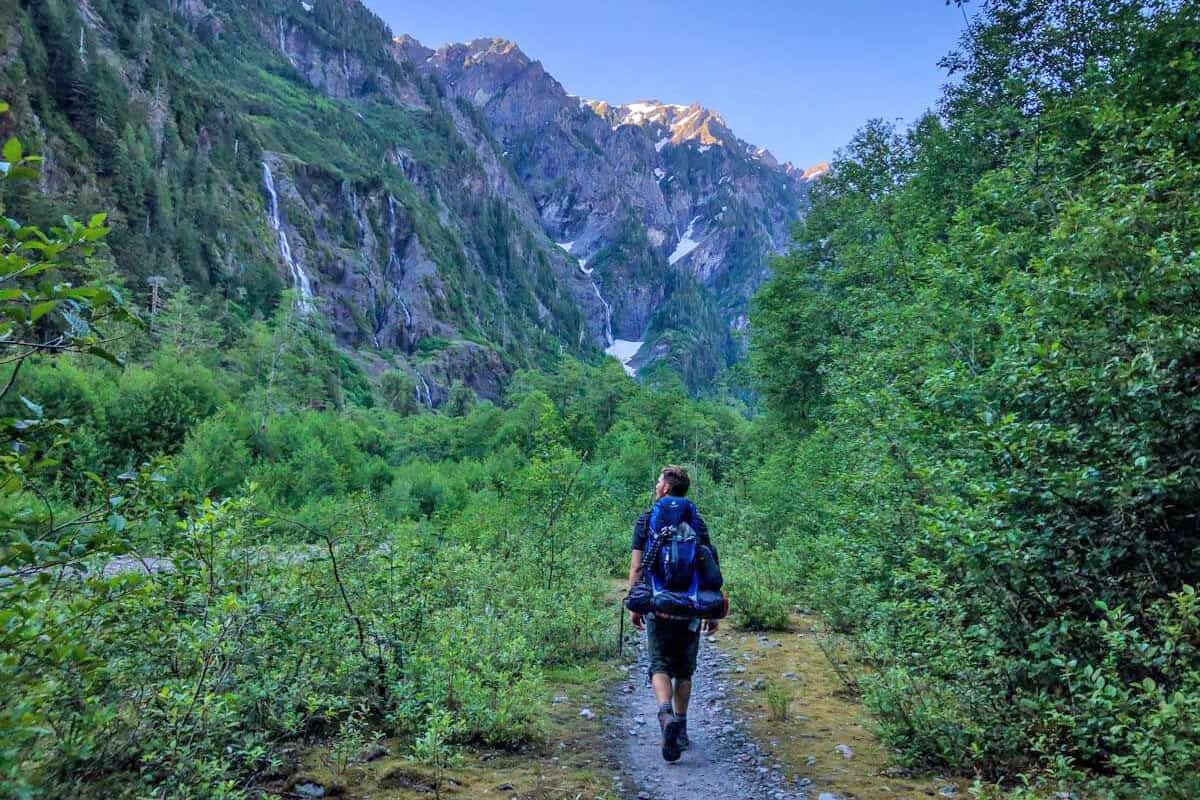
No need to purchase a lot of unique “hiking clothing” for your first backpacking trip. Simply go throughout your physical fitness wear and locate clothes made from moisture-wicking, quick-drying fabrics such as polyester and nylon.
(Moisture-wicking fabric pulls sweat away from your skin to help keep you drier.) Stay away from cotton that slurps up water also requires a very long time to dry when wet. This can chill you and also, in a situation, cause hypothermia.
Your backpacking clothing ought to be grouped into layers:
- Next-to-skin foundation layers (aka long underwear): Significant because warm days may end with chilly nights.
- Rainwear: Certainly bring a waterproof/breathable coat; if you also bring rain trousers is contingent upon the weather prediction (rainwear is also great at preventing mosquito bites).
The best thing about layering is that it enables you to adjust to changing requirements quickly. It also allows you to collect a solid clothing shield against storms which move in unexpectedly, bringing chilly and moist weather.
When you’ve got a favourite set of non-cotton athletic tights or yoga trousers, they could work as either your base layer or your hiking pants.
They are worn as pants that they will not provide you convenient stash pockets and they will be vulnerable to brush snags and stone abrasion than ordinary hiking ski pants.
What Shoes to Bring Backpacking
Since your feet are critical to a fruitful excursion, footwear is your most significant thing. A few explorers demand steady over-the-lower leg boots, while others incline toward lightweight path running shoes.
our boots or shoes ought to be all around broken-in before you go. Wear fleece or engineered socks, and consider bringing an ultra-light pair of shoes or water shoes for wearing around camp (and for fording springs).
Backpacking Food
For an overnight backpacking trip, strategy for supper, breakfast and a few lunches. Save money by visiting the supermarket instead. You need a more relaxed, check this out for the best camping coolers. Therefore perishable items like fresh eggs cannot be on the menu.
Prevent canned food (too heavy) and attempt to accurately predict how much you will eat as an excessive quantity of food adds bulk and weight to a pack. You want a little excess food, however –sufficient for an additional day in the wilds. Here are some particular meal-planning Strategies for your first backpacking trip:
Dinner
Search for all-round meals like packaged rice or noodle entrees.
Boxed meals could be removed and put in a plastic bag for easier packing.
Snacks and Lunches
Bring unhealthy, high-protein vitality bars and trail blend to chew on during the day since exploring consumes a great deal of metabolic fuel. Keep things straightforward by making lunch a trailside issue with plentiful tidbits and a more drawn out rest. Other hiking lunch alternatives incorporate bagels, jerky, dried leafy foods.
Breakfast
This can extend from a cooked entrée (hotcakes anybody?) to hot cereal from a blend to a few breakfast bars. You need to gauge the benefits of beginning your day heated up and energized up as opposed to hitting the path prior. On the off chance that you can’t abandon your energized refreshment, your least multiple choice is a moment espresso blend or tea sacks.
Wildlife Precautions
Over the road follow common-sense steps like maintaining a respectful distance from creatures and taking care never to come between big mammals and they are young. Frequently this is achieved by placing everything in an extra stuff sack then employing a nylon cord to hang it out of atop a tree branch. You might also utilize a bear canister to fasten things, even when the primary issue is rodents stealing your meals.
Prepare for your Backpacking Trip
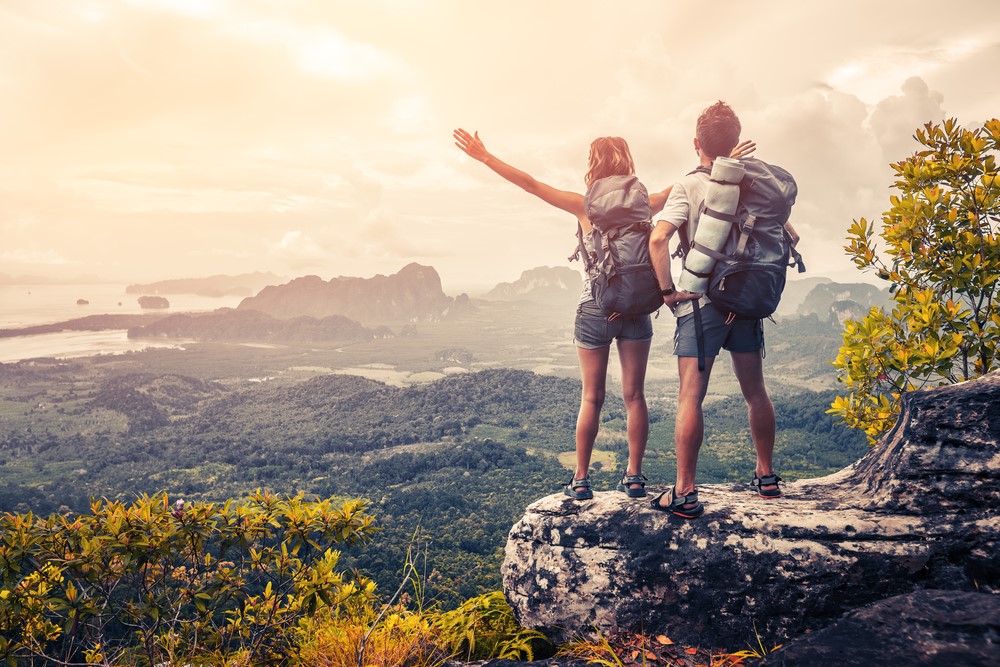
Set yourself up for success by taking actions to make sure that you’re physically and emotionally ready for your trip. To prepare for backpacking, follow these hints:
Get ready
You are not searching for a marathon, but a brief trip can be physically demanding. In a minimum do lots of day hikes as a way to handle trails using a comparable distance and altitude gain as your intended trip. Do at least a couple pre-trip drops of a similar problem wearing a backpack packed with 30-plus pounds.
Get mentally ready
Familiarize yourself with your gear beforehand. Pitch your tent, fire your cooker and filter some water before going.
Learn your logistics
Along with figuring out your trip to and from the trailhead, you have to make sure that you have all the necessary licenses. Popular destinations are particularly likely to need them. Check with the local property management agency to find out what is needed. Land managers are also a fantastic resource for updated road conditions, fire restrictions, and other valuable Intel.
Leave a trip plan with a buddy or relative
Include details on where you are going and when you expect to return.
This gives them a jump on alerting help should You Ever want it
Do you’re packing early
Dont wait till the night ahead to load your pack. Do your pre-trip pack loading a few days beforehand, then weigh it to make sure you did not overdo it? A guideline is that it ought to consider no more than 20 per cent of your body weight. If your pack weighs well over that mark, have a fierce look at your own checklist and then see what you may jettison.
Bottom Line
Backpacking is a fantastic outdoor action, and everybody was brand new to backpacking at a particular stage. Learning throughout your errors is undoubtedly part of the procedure. Every well-seasoned vet has left one or more of those frequent backpacking mistakes, a number of us over once. However, now you are more permitted to have out there and handle the road like an expert. You will need to find out more like that which gear to put money into, the way to train correctly for significant goals, opting for terrible weather, and even more as you keep in your own backpacking travel.
Naturally, you cannot learn all you want to understand from studying a blog article about how to go backpacking or by taking a class on backpacking. A part of your learning experience should include things like hitting the paths and learning from the mistakes. That is just the way it’s my buddy. I have helped you avoid some crucial ones until you try your first backpacking trip.
